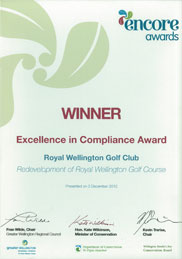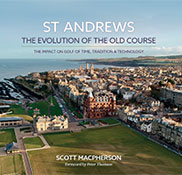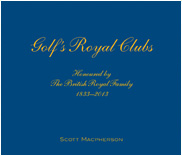GOLF CHAMPIONSHIPS ON SMGD COURSES:
At Close House – Colt Course. Sept 2017. A prestigious European Tour Championship hosted by Lee Westwood.
Broadcast worldwide from Royal Wellington Golf Club, NZ. October 2017. WOW!
The legacy continues.
Co-hosted at the award-winning Millbrook Resort near Queenstown, NZ. 2014 – 2023.
1906 Wisdom
It is not often I find articles that I want to quote almost in their entirety, but – and there’s always a but – I did very recently. It was entitled ‘New Theories of Course Construction’. It began…
‘Many things, good and bad, have happened to golf in recent years. So recently in fact, and in so many things, that one does not need to be very old or cranky to say that the game has almost undergone a revolution,’ I became interested, so I read on… ‘New rules and new decisions, the congestion of courses, the decay of manners, the multiplication of championships, green fees, caddie-masters, the licensing Act, pots and publicity, mixed foursomes, four-ball matches against bogey…these are a few of the things which sometimes make the middle-aged golfer sigh for the peace and quiet of the old links and old golf.’
It continued… ‘no one who dispassionately considers the present position of golf will condemn all the changes that have taken place or deny that the playing of the game has reached a higher plane of achievement at the present day than at any previous period of its history.
The advance in play has been due partly to the improvement in clubs and balls, and partly due to more scientific methods in green-keeping and in the laying out of holes and courses.’
Then the article reflected on the ‘storm of controversy’ which the new ball has excited, with leading players and authorities declaring that ‘the game was ruined and courses destroyed beyond hope of remedy. Players were levelled up and records were broken, and medals and championships won with unheard of scores.’ As a result holes were lengthened, but, as the article continued… ‘it began to be dimly perceived that length and breadth were not everything in a hole, and golf was something better than a mere driving competition. It was discovered that golf should really demand thought, and a beginning was made by putting the holes in inaccessible corners of the putting greens.’
The article concluded by saying… ‘The great fault of the new courses is want of interest and variety in the shots they demand from a good player, but this is only partly due to the unincidental character of the ground and the monotonous lengths of the hazards both through the green and for the approaches, so that on one green the hazards are all wing hazards, and on another they are all cross hazards, and all at mathematical distances. Time after time the same shot is presented, and there is little or no call on resource or skill. Real “thinking golf” should mean more than merely keeping straight and playing to a point. It should present a constant succession of different problems, of strength as well as of length, and of elevation as well as direction. Let us have holes of all reasonable lengths, provided that our shots shall be difficult, and whether they be straight or crooked shall still leave us difficult ones to negotiate. And let us place our hazards, and make them, if need be, so as to achieve this, blind or open, high or low, behind the hole or before it, or to the right hand or to the left. We do not want them where a good player will feel them. Hazards should not be made so much as to punish the bad shots as to excite and create good ones’
Few of these views could I have expressed better myself. But what I thought was remarkable about this article was not the sense or logic it conveyed, but the accuracy it which it summed up many of the current issues in contemporary design…especially since this article was published in January of 1906! Indeed, this article was not referring to the modern ball or the effect of ‘hot-faced drivers’ but was reflected on the issues surrounding the advent of the rubber-cored ball over 100 years ago!
AWARDS
 Winner
Winner
Excellence in Compliance Award
Royal Wellington Golf Club
 Scott awarded by GEO as a Sustainable Golf Champion
Scott awarded by GEO as a Sustainable Golf Champion
PUBLICATIONS
 St Andrews
St Andrews
The Evolution of the Old Course
by Scott Macpherson
TESTIMONIALS
"The course looks absolutely stunning and every single golfer, without exception, has said how wonderful it is and that the views are exceptional. Most of that is down to Scott's own design, imagination and flair and I am very grateful for all the effort he put into making the course so special."
Graham Wylie, Owner of Close House Hotel and Golf. England, UK



